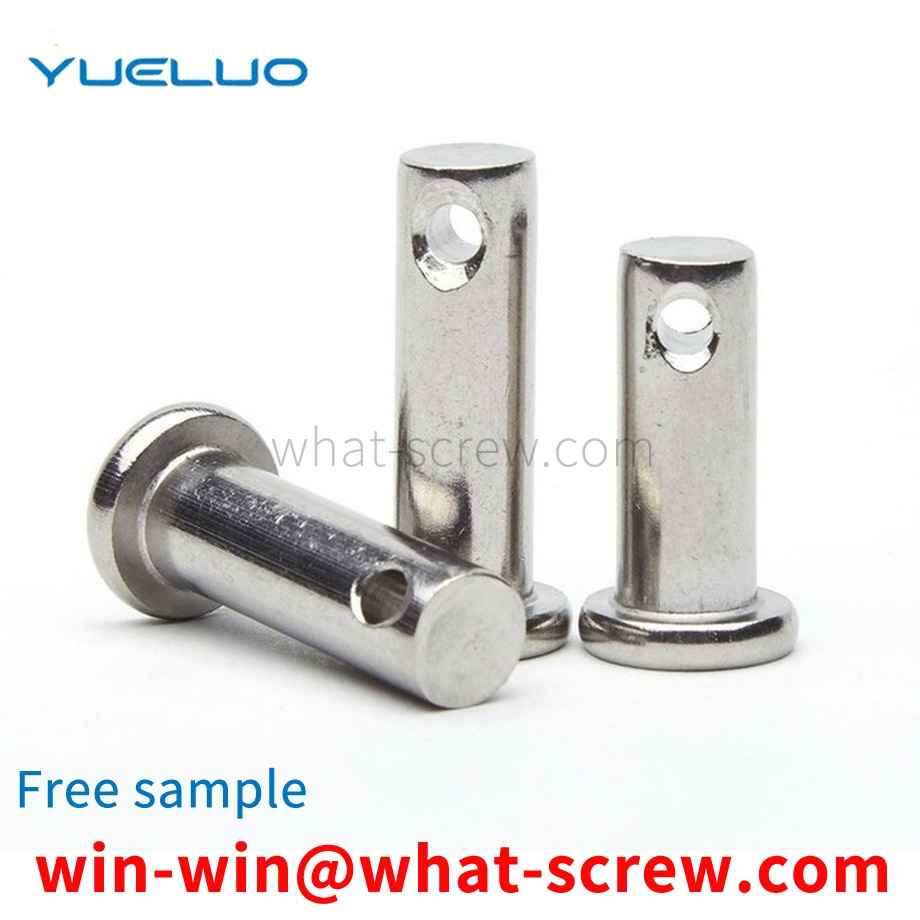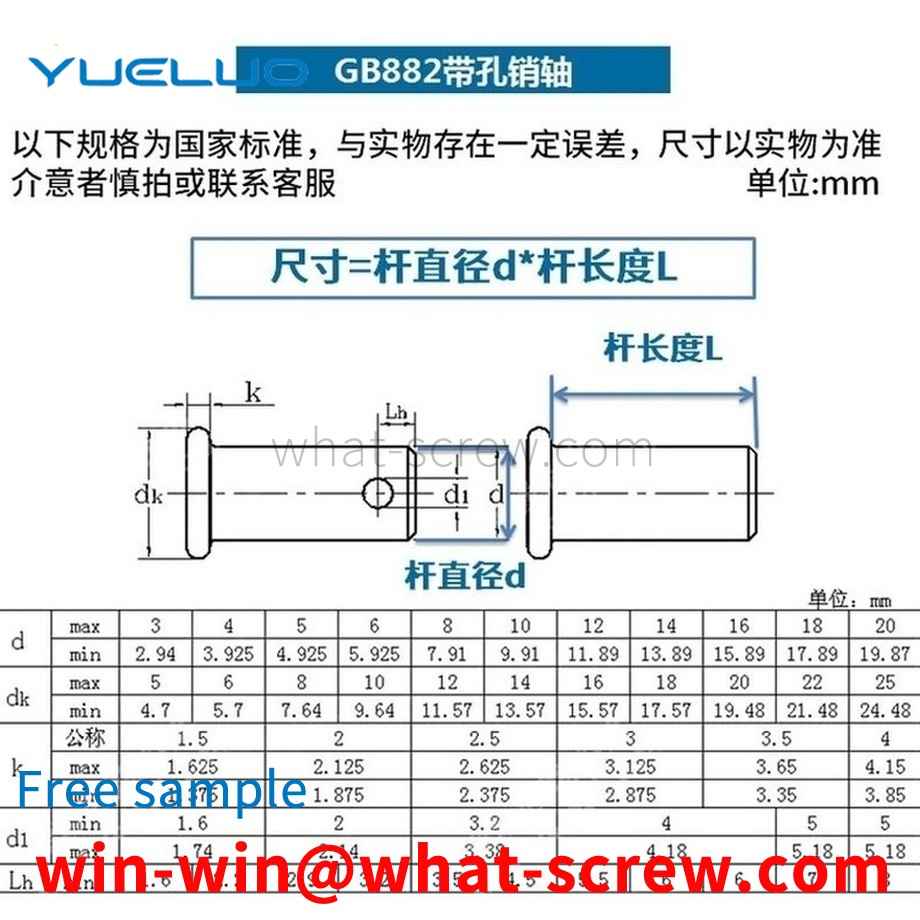The embedded nut is made of copper nuts made of various embossed wires (usually lead brass, such as H59, 3604, 3602). The embedded knurled copper nuts that we come into contact with on a daily basis are processed by precision automatic lathes. The reference standard for embedded knurled copper nuts comes from the national standard GB/T809. The main operation method of the anti-loose nut is to inject the embedded knurled copper nut. After heating, it is embedded into the plastic part or directly injected into the mold. If the mold is injection-molded, the melting point of PA/NYLOY/PET is above 200°C , After the embedded nut is hot melted into the plastic part, the temperature rises rapidly. After injection molding, the plastic body rapidly cools and crystallizes and becomes hard. If the embedded nut temperature is still at a high temperature, it may fall to the place where the copper nut contacts the plastic part. Start to loosen or crack. Therefore, copper nuts are used instead of carbon steel nuts in the injection molding of embedded nuts. There are two ways to form the external knurling of the embedded copper nut. One is to use copper raw material to draw the knurl and then to produce it on the upper equipment. Generally, the pattern of this method is straight, and the other is to use The round copper material is directly embossed while tapping during the production process. This processing method can produce some non-standard size knurled copper nuts. The embossed shape of the embedded copper nut can be selected by the user, such as mesh, Character embossing, herringbone embossing and other knurling patterns.
The production of stud bolts requires fixed equipment and machine tool processing. Of course, the processing procedure is relatively simple. There are mainly the following procedures: first, the material needs to be pulled out. After this process, the next process can be carried out. The next process is to use a cutting machine to cut the straight and long material into the length required by the customer according to the customer's requirements. This completes the second process. The third process is Put the cut short material on the thread rolling machine and roll out the thread; the ordinary stud bolts are processed here, of course, if other requirements are required, other processes are required. [1] The commonly known bolt refers to the screw with a larger diameter. According to this statement, the diameter of the screw is much smaller than that of the bolt. Stud bolts do not have a head, and some are called studs. Both ends of the stud are threaded, with no thread in the middle and a smooth rod in the middle. Studs are used on large equipment such as gear racks. In actual use, the external load will have vibration and the influence of temperature will reduce the frictional force, and the threaded connection will loosen and fail over time. Therefore, it is necessary to do a good job in the maintenance of the stud bolts at ordinary times. Stud bolts or anchor bolts will have problems under the action of mechanical friction for a long time. When problems occur, the engine oil pan should be removed, and the use of the engine bearing bushes should be carefully checked, and the clearance between the bearing bushes should be checked. Whether it is too large, if the gap is too large, it should be replaced in time. When replacing the stud bolts, also replace the connecting rod bolts. When some large equipment such as nail making machines are in normal operation, if they find that the engine is not running very stable or there is abnormal noise, they should stop and check in time to avoid bigger problems. [1] In each maintenance, the newly replaced stud bolts and other accessories should be inspected. During the inspection, the focus should be on the head and guide part of the stud bolt. Whether there are cracks or dents in each part, and also check whether the tooth shape of the stud bolt has changed. Is there any abnormality in the thread pitch? If there is any abnormality, it must not be used again. A torque wrench should be used when installing the connecting rod cover. It must be tightened according to the specified standards, the torque should not be too large or too small, and attention should be paid to selecting the stud bolts and studs of the supporting manufacturer.
Hot rolled wire rod before plating process - (cold drawing) - spheroidizing (softening) annealing - mechanical dephosphorization - pickling - cold drawing - cold forging - threading - heat treatment - inspection
As the requirements for the use of electrical appliances in various industries continue to increase, the testing specifications for the performance of various components in electrical appliances are also constantly improving. Riveted contact elements are used in various relays, contactors, small switches, thermostats, etc. in low-voltage electrical appliances. The structure of the riveted contact element generally includes a contact base and a rivet riveted to the contact base. The rivet includes a rivet head and a rivet top, the structure of which is shown in FIG. 1 .
Rivets are nail-shaped objects with a cap on one end: in riveting, the riveted parts are connected by their own deformation or interference. There are many types of rivets, and they are not restricted in form. Commonly used are R-type rivets, fan rivets, blind rivets, tree-shaped rivets Rivets, semi-circular head, flat head, semi-hollow rivets, solid rivets, countersunk head rivets, blind rivets, hollow rivets, these usually use their own deformation to connect the riveted parts, generally less than 8 mm with cold rivets, larger than this size with Hot riveting, but there are exceptions. For example, the nameplate on some locks is riveted by the interference between the rivet and the lock body hole. The rivet pliers are used to cut rivets. The existing rivet pliers have a simple structure and cannot be riveted according to the The user needs to cut a certain length of rivets, and cutting the rivets is time-consuming and labor-intensive, and it is not convenient for people to use.
We have many years of experience in the production and sales of screws, nuts, flat washers, etc. The main products are: environmental protection rivets, galvanized thickened nuts, joint screws and screw nuts, bolts and other products in communication facilities, we can provide you with The right fastener solution for you.



















 Service Hotline
Service Hotline




